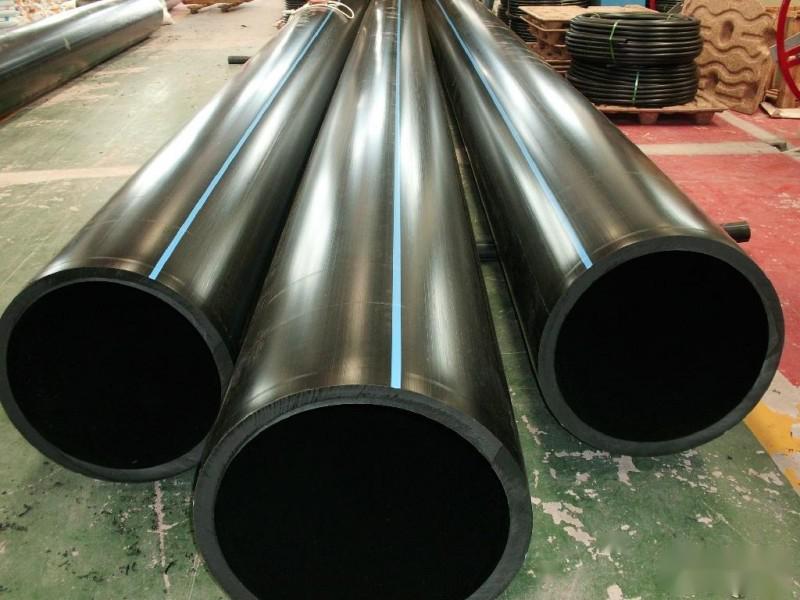HDPE Pipe Price/LuoyangPE Pipe
Plastic pipes have made significant advancements and improvements in design theories and construction technologies in the building industry, accumulating rich practical experience, which has led to plastic pipes occupying a rather important position in building water supply and drainage projects, forming an unstoppable development trend. In China, the plastic pipes commonly used in water supply pipelines mainly include PVC-U water supply pipes, PP-R pipes, aluminum-plastic composite pipes (PAP), steel-plastic composite pipes (SP), HDPE pipes, etc. HDPE pipes have only appeared in the market in the past two to three years. They are formed through advanced production processes and technologies, using hot extrusion, and have characteristics such as corrosion resistance, smooth inner walls, low flow resistance, high strength, good toughness, and lightweight. HDPE pipes have become the second-largest plastic pipe variety in terms of consumption after PVC-U drainage pipes.
1.Development of HDPE Water Supply Pipes:LuoyangPE Pipe
In water supply and drainage pipeline systems, plastic pipes have gradually replaced traditional materials such as cast iron pipes and galvanized steel pipes, becoming the mainstream materials. Compared with traditional pipes, plastic pipes have significant advantages such as lightweight, corrosion resistance, low water flow resistance, energy savings, easy and quick installation, and lower costs, which have made them popular in the pipeline engineering sector. Meanwhile, with the rapid development of the petrochemical industry and continuous advancements in plastic manufacturing technology, the production of plastic pipes has surged, and the variety of products has become more diverse.
HDPE pipes have become the second-largest plastic pipe variety in terms of consumption after PVC-U water supply pipes. For gas transmission, PE80 and PE100 grade medium or high-density polyethylene pipes should be used; for water supply pipes, PE80 and PE100 grades are typically used, while PE63 is gradually being phased out. In terms of water transmission, the rapidly growing segment is the PE100 pipe system, which is expected to achieve a growth rate of over 10% in the next five years.
In Europe, HDPE pipes have seen rapid development and application, gradually replacing PVC-U pipes to become the main consumption pipes. At the same time, HDPE pipes are also gradually being used outside of Europe.
2.Specifications and Connection Methods of HDPE Pipes:LuoyangPE Pipe
The diameters of HDPE pipes range from DN16 to DN315, divided into 18 levels. The pressure ratings range from 0.25Mpa to 1.0Mpa, with a total of 4 levels.
HDPE pipes will melt at temperatures between 190℃ and 240℃. Utilizing this characteristic, the melted parts of pipes (or fittings) are brought into sufficient contact under appropriate pressure, and after cooling, they can firmly fuse together. Therefore, the connection methods for PE pipes differ from those of U-PVC pipes, typically using electric heat fusion and thermal butt fusion. Depending on the diameter, specific methods can be divided as follows: for DN≤63, injection molded heat fusion socket connections are used; for DN≥75, thermal butt fusion or electrofusion socket connections are used; flanged or threaded connections are applied when connecting with different materials. For pipeline repair methods, there are expansion pipe construction methods and internal lining with HDPE methods.
3.Application Fields of HDPE:LuoyangPE Pipe
HDPE pipes are mainly used for: municipal engineering water supply systems, indoor water supply systems of buildings, outdoor buried water supply systems, and buried water supply systems in residential areas and factories, old pipeline repairs, water treatment engineering pipeline systems, and industrial water pipes for landscaping, irrigation, and other fields. However, it should be noted that HDPE pipes cannot be used for hot water pipelines.
4.Advantages of HDPE Water Supply Pipes in Application:LuoyangPE Pipe
HDPE water supply pipes are widely used mainly due to their incomparable advantages over other pipes:
1. Easy to weld and electric fusion weld to form a complete closed impermeable system. When laid along trenches, it can reduce the amount of excavation and the use of fittings.
2. Lightweight and easy to install and handle;
3. Strong wear resistance and excellent hydraulic properties, allowing buried pipes to be used without external protection. It can be suitable for areas subject to earthquakes and subsidence in mining areas, and can also be laid using immersion methods at the bottom of rivers.
4. Resistant to chemical corrosion, internal, external, and microbial corrosion, with strong corrosion resistance and healthiness. Suitable for transporting acidic and alkaline substances, sewage, natural gas, and gas;
5. Good environmental adaptability and freeze resistance. Can be used for indoor and outdoor water supply pipelines.
6. Long service life, with a lifespan of over 50 years;
7. Easy to recycle and reuse.
Contact Person:Manager Zhao
Mobile:18623755437
Telephone:0379-60692512
Fax:0379-65260950
Company Website:www.lygrsjw.com
Email:874689613@qq.com
Factory Address: Zhejiang Business Industrial Park, Matun Town, Mengjin County, Luoyang City, Henan Province
Welcome to purchase our polyethylene pipes, and we will provide you with excellent product services!













